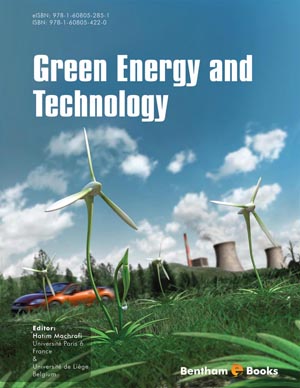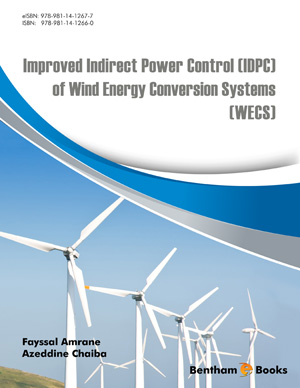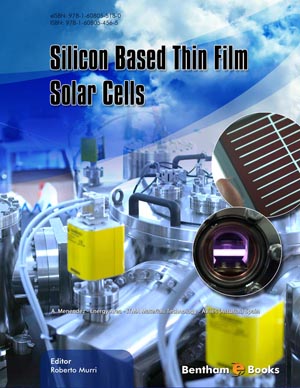Book Volume 4
Preface
Page: i-i (1)
Author: Haythem Nasraoui, Moubarek Bsisa and Zied Driss
DOI: 10.2174/9789811461750120040001
Nomenclature
Page: ii-iii (2)
Author: Haythem Nasraoui, Moubarek Bsisa and Zied Driss
DOI: 10.2174/9789811461750120040002
Introduction
Page: iv-iv (1)
Author: Haythem Nasraoui, Moubarek Bsisa and Zied Driss
DOI: 10.2174/9789811461750120040003
Bibliographic Study
Page: 1-33 (33)
Author: Haythem Nasraoui, Moubarek Bsisa and Zied Driss
DOI: 10.2174/9789811461750120040004
PDF Price: $15
Abstract
Renewable energy sources are those that do not rely on stored energy resources. Various forms of renewable energy are currently used for the generation of electricity. As with most industries, the relative cost of a product becomes less expensive as technologies improve and product knowledge increases, with the renewable energy industry being no exception. Using renewable resources, such as the sun, would provide almost unconditional access to energy without depleting the world’s natural resources. In this chapter, we are interested in the study of solar energy and its different technologies, particularly to the solar chimney system.
Numerical Approach
Page: 34-56 (23)
Author: Haythem Nasraoui, Moubarek Bsisa and Zied Driss
DOI: 10.2174/9789811461750120040005
PDF Price: $15
Abstract
Modeling is mainly the basis of engineering and it is a suitable simplification of reality. The displaying expertise is to detect the fitting degree of disentanglement, recognize significant highlights from those that are insignificant in a specific application, and use designing judgment. This chapter presents a complete model specification of the solar chimney power plant on which all simulations and results are based and devoted to the presentation of the physical and numerical models by using in the CFD code ANSYS Fluent 17.0. The following will discuss the equations and models incorporated by ANSYS Fluent to model a solar chimney power plant. The governing equations will be presented, which describe the coupling of temperature fields, velocity, and pressure from the conservation equations. Then, the discretization methods and meshing used will be examined. Finally, the models for turbulence and radiation will be explored.
Numerical Models Choice and Validation with Anterior Results
Page: 57-94 (38)
Author: Haythem Nasraoui, Moubarek Bsisa and Zied Driss
DOI: 10.2174/9789811461750120040006
PDF Price: $15
Abstract
This chapter reviews the methodology used to model a solar chimney using ANSYS Fluent 17.0 and the validation study to confirm the different models suitable to simulate the airflow through a solar chimney system. A 2D numerical simulation is carried out to analyze and compare the performance of different numerical models and inner details of the solar chimney by taking Kasaeian et al. (2014) as a case validation. We use geometric parameters and metrological data similar to Kasaeian et al. (2014). To validate our numerical results with his experimental results. The main objective of this chapter is to choose the numerical parameters using the CFD code to investigate the airflow in the solar chimney.
Design of Prototype
Page: 95-161 (67)
Author: Haythem Nasraoui, Moubarek Bsisa and Zied Driss
DOI: 10.2174/9789811461750120040007
PDF Price: $15
Abstract
Numerous studies about the use of solar chimney for air conditioning, drying, and electrical power production were performed. The present study considered first the heat transfer process and the fluid dynamics in the collector and the chimney tower and extended later by a parametric study on the effects of the geometrical parameters. A validated CFD code was adopted to the solar chimney shape to resolve the governing equations (continuity, momentum, and energy equations). The investigation displays a necessity for a more detailed analysis of such systems, which is essential for an ample definition of the design rules. The available literature is scarce on this type of analysis, as research mostly concentrates on the evaluation of the global performance of such systems. For the design of real systems, more detailed studies of the geometrical and operational aspects are needed, involving meteorological conditions and geometric performances. This work is based on understanding the mechanisms of flow and transfer of natural convection in two-dimensional configurations using the CFD software ANSYS Fluent to find the optimal design that allows adequate thermal control and maximum energy performance. Besides, we have studied numerically the effect of the geometrical parameters, such as the chimney diameter, the chimney height, the collector diameter, the collector slope angle, and the collector height, thus to obtain the optimal parameters.
Experimental Study
Page: 162-187 (26)
Author: Haythem Nasraoui, Moubarek Bsisa and Zied Driss
DOI: 10.2174/9789811461750120040008
PDF Price: $15
Abstract
There are many configuration sizes of the small-scale solar chimney in the world, because of various meteorological and geographic conditions. The main objective of their works is to test the heat transfer performance of the collector and the power output. However, our work is based on the numerical study and numerical optimization of geometric parameters to testing the performance of the prototype with meteorological data. In the first part, we are interested in the experimental characterization of a solar chimney with specific instrumentation. In particular, we present a detailed description of the realization and the various manipulations made to the study. A discussion of results is then presented at the end of this chapter.
Conclusion & Recommendations
Page: 188-189 (2)
Author: Haythem Nasraoui, Moubarek Bsisa and Zied Driss
DOI: 10.2174/9789811461750120040009
References
Page: 190-191 (2)
Author: Haythem Nasraoui, Moubarek Bsisa and Zied Driss
DOI: 10.2174/9789811461750120040010
Subject Index
Page: 192-198 (7)
Author: Haythem Nasraoui, Moubarek Bsisa and Zied Driss
DOI: 10.2174/9789811461750120040011
Introduction
Solar Chimney Power Plants: Numerical Investigations and Experimental Validation summarizes the effect of the geometrical parameters of a solar chimney on the airflow behavior inside a solar chimney power plant. Chapters in this experimental handbook are presented in two parts with the goal of equipping readers with the information necessary to study and determine key factors which affect the performance of the solar chimney power plant. In the first part, the authors present a simulation developed by using computational fluid dynamics (CFD) modeling software ANSYS Fluent to model the airflow. The adopted CFD models include k-ɛ turbulence model, the DO radiation model and the convection heat flux transfer model. These models have been validated with anterior experimental results. In the second part, the simulated models are then tested with alternate geometric configurations of the solar chimney power plant. The numerical studies allow readers to consider ways to expand on the design optimizing of the solar chimney when constructing a prototype. Geometrical parameters include the height, the diameter of the chimney and the dimensions of the solar collector and their effect on the temperature and air pressure is documented to validate models used for experimental simulations. The handbook also includes a study of an experimental prototype, constructed at ENIS. The researchers have gathered data on the environmental temperature, distribution of the temperature, air velocity and the power output generated by the turbine, the solar radiation and the gap of temperature in the collector of the prototype.













